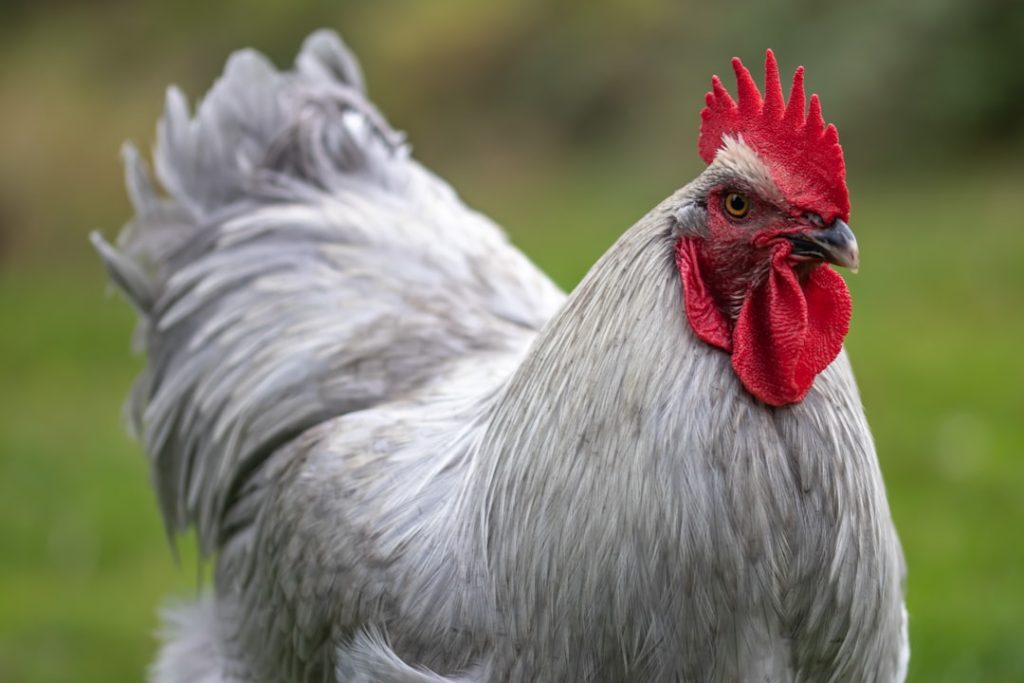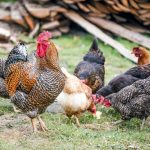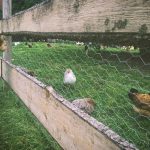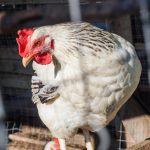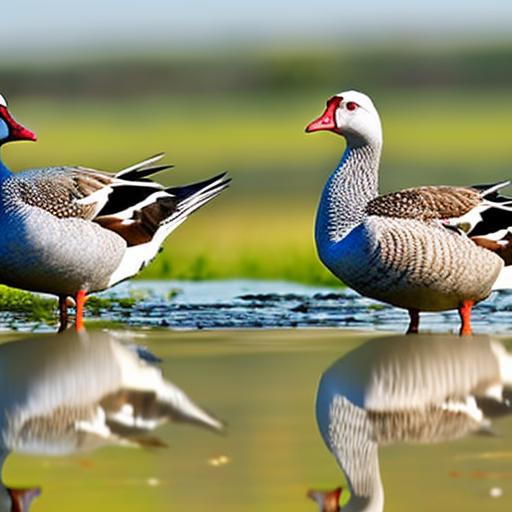Chickens consuming dog food is a common issue for pet owners who also keep chickens. These birds are naturally inquisitive and opportunistic feeders, often attracted to the aroma and flavor of dog food. Free-ranging chickens may encounter dog food in shared outdoor spaces.
While dog food is formulated differently from chicken feed, occasional small amounts are generally not harmful to chickens. However, regular consumption can lead to dietary imbalances, potentially causing health problems such as obesity or nutrient deficiencies. Competition for food resources may also drive chickens to eat dog food.
When chickens and dogs are fed in close proximity, chickens might be drawn to the dog food due to perceived resource competition. Additionally, if chickens have insufficient feed or empty feeders, they may turn to dog food as an alternative food source. Understanding these factors is crucial for pet owners to effectively address the issue and maintain the health of both their dogs and chickens.
Table of Contents
- 1 Separating feeding areas: Keeping dog food and chicken feed separate
- 2 Feeding schedules: Establishing specific feeding times for dogs and chickens
- 3 Elevated feeding stations: Using raised platforms for dog food bowls
- 4 Supervised feeding: Monitoring feeding times to prevent chickens from accessing dog food
- 5 Secure storage: Storing dog food in a secure container to prevent access by chickens
- 6 Training and deterrents: Implementing training techniques and deterrents to discourage chickens from eating dog food
- 7 FAQs
Key Takeaways
- Chickens may eat dog food due to curiosity, hunger, or a lack of access to their own feed
- Keep dog food and chicken feed in separate areas to prevent chickens from accessing dog food
- Establish specific feeding times for dogs and chickens to control access to food
- Use raised platforms for dog food bowls to make it difficult for chickens to reach
- Monitor feeding times to prevent chickens from accessing dog food and discourage the behavior
- Store dog food in a secure container to prevent access by chickens
- Implement training techniques and deterrents to discourage chickens from eating dog food
Separating feeding areas: Keeping dog food and chicken feed separate
Here is the rewritten text with 3-4 Separating Feeding Areas
————————
One effective solution to prevent chickens from eating dog food is to keep their feeding areas separate. This can be achieved by designating specific areas for feeding dogs and chickens, ideally in different parts of the yard or property. By creating distinct feeding zones, pet owners can minimize the chances of chickens accessing dog food and vice versa.
Reducing Competition and Promoting Peace
————————————-
This can also help reduce competition for food resources between the two animals, promoting a more peaceful coexistence.
Using Different Types of Feeders
——————————-
In addition to physical separation, pet owners can also consider using different types of feeders for dogs and chickens. For example, using elevated or hanging feeders for chickens can help keep their feed off the ground and out of reach of dogs. Similarly, using heavy-duty, spill-proof bowls for dog food can prevent chickens from accessing it.
Effective Feeding Area Management
——————————-
By implementing these measures, pet owners can effectively manage the feeding areas for their dogs and chickens, reducing the likelihood of cross-contamination between their respective feeds.
Feeding schedules: Establishing specific feeding times for dogs and chickens

Establishing specific feeding times for dogs and chickens can also help prevent chickens from eating dog food. By creating a consistent feeding schedule for both animals, pet owners can ensure that each species has access to their respective feeds without overlap. This can help reduce the chances of chickens scavenging for dog food when it’s not their designated feeding time.
Pet owners can establish separate feeding times for dogs and chickens by setting regular meal times and sticking to a routine. For example, dogs can be fed in the morning and evening, while chickens can be given access to their feed during specific times of the day. By adhering to a feeding schedule, pet owners can help train their animals to expect food at certain times, reducing the likelihood of chickens seeking out dog food at other times.
Additionally, providing ample feed during designated feeding times can help discourage chickens from looking for alternative sources of nutrition.
Elevated feeding stations: Using raised platforms for dog food bowls
Using raised platforms for dog food bowls can be an effective way to prevent chickens from accessing dog food. Elevated feeding stations can help keep dog food out of reach of chickens, reducing the chances of cross-contamination between the two feeds. Pet owners can invest in raised feeding stands or platforms specifically designed for dog bowls, ensuring that dog food remains inaccessible to chickens.
Elevated feeding stations can also help promote better eating posture for dogs, reducing strain on their neck and back while they eat. This can be particularly beneficial for older dogs or those with mobility issues. Additionally, raised platforms can help prevent spills and messes around the feeding area, keeping the space clean and organized.
By incorporating elevated feeding stations into their pet care routine, pet owners can effectively manage the feeding environment for their dogs and minimize the risk of chickens eating dog food.
Supervised feeding: Monitoring feeding times to prevent chickens from accessing dog food
Supervised feeding is another strategy that pet owners can use to prevent chickens from eating dog food. By actively monitoring feeding times for both dogs and chickens, pet owners can intervene if they observe any attempts by chickens to access dog food. This can involve physically supervising feeding times or using surveillance tools such as cameras to keep an eye on the animals’ behavior around their respective feeding areas.
During supervised feeding, pet owners can also take proactive measures to deter chickens from approaching dog food. For example, they can use verbal commands or gentle redirection to discourage chickens from venturing near the dog’s feeding station. By consistently reinforcing boundaries and expectations during feeding times, pet owners can help train their chickens to respect the designated areas for dog and chicken feed.
Supervised feeding not only helps prevent chickens from eating dog food but also allows pet owners to ensure that both species are receiving adequate nutrition without interference.
Secure storage: Storing dog food in a secure container to prevent access by chickens
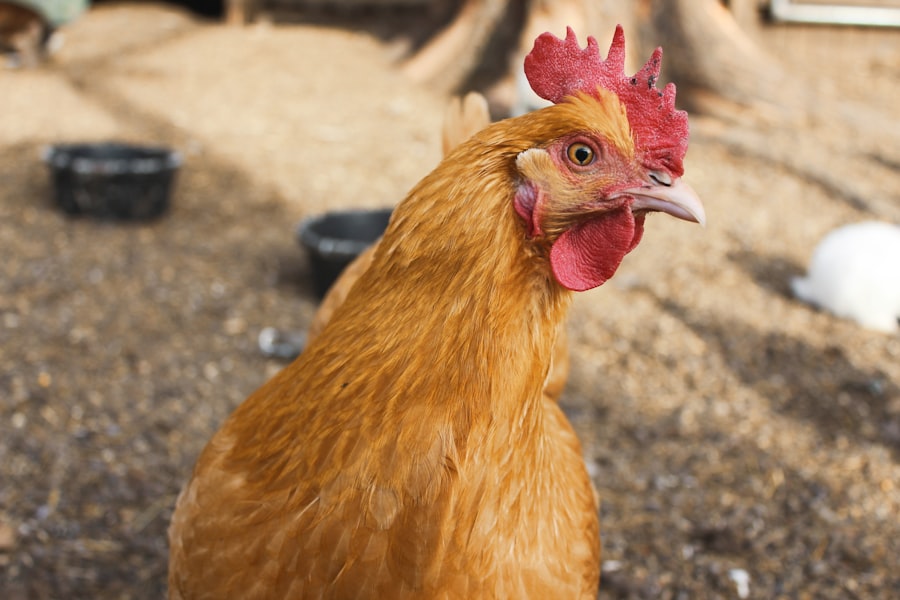
Minimizing the Risk of Contamination
By securely storing dog food, pet owners can minimize the risk of chickens getting into the food supply and consuming it. In addition to using secure containers, pet owners should also practice good hygiene and cleanliness when handling and storing pet food.
Good Hygiene and Cleanliness Practices
This includes promptly cleaning up any spills or crumbs around the feeding area and regularly inspecting the storage containers for signs of damage or wear.
Effective Storage System
By maintaining a secure storage system for dog food, pet owners can effectively safeguard the feed from unwanted access by chickens and other pests.
Training and deterrents: Implementing training techniques and deterrents to discourage chickens from eating dog food
Implementing training techniques and deterrents can help discourage chickens from eating dog food. Pet owners can use positive reinforcement training to teach their chickens to avoid the dog’s feeding area and focus on their own feed. This can involve rewarding chickens with treats or praise when they exhibit desired behavior, such as staying away from the dog’s bowl during feeding times.
In addition to training, pet owners can also use deterrents such as physical barriers or repellents to discourage chickens from accessing dog food. For example, placing a mesh barrier around the dog’s feeding station can prevent chickens from reaching the food while still allowing easy access for the dog. Similarly, using natural repellents with strong scents that are unpleasant to chickens can help deter them from approaching the dog’s bowl.
By combining training techniques with deterrents, pet owners can effectively communicate boundaries to their chickens and discourage them from eating dog food. Consistency and patience are key when implementing these strategies, as it may take time for chickens to learn and adapt to new behaviors around feeding areas. In conclusion, preventing chickens from eating dog food requires a combination of understanding the underlying reasons for this behavior and implementing practical solutions to manage feeding areas effectively.
By keeping dog food and chicken feed separate, establishing specific feeding schedules, using elevated feeding stations, supervising feeding times, storing dog food securely, and implementing training techniques and deterrents, pet owners can create a harmonious environment where both dogs and chickens receive proper nutrition without interference. With careful planning and consistent management, pet owners can successfully address the issue of chickens eating dog food and promote the health and well-being of all their animals.
If you’re looking for more information on keeping different types of poultry together, you might be interested in this article on whether guinea fowl can live with chickens. It’s important to consider the dynamics of different types of birds when keeping them together, just like with keeping chickens from eating dog food.
FAQs
What is the problem with chickens eating dog food?
Chickens eating dog food can lead to nutritional imbalances and health issues for the chickens. Dog food is formulated for the specific nutritional needs of dogs and may not provide the necessary nutrients for chickens.
How can I keep chickens from eating dog food?
One way to keep chickens from eating dog food is to feed the dogs and chickens separately. This can be done by feeding the dogs in a separate area or at a different time than the chickens.
Are there any other methods to prevent chickens from eating dog food?
Another method to prevent chickens from eating dog food is to use a feeder that is specifically designed to be accessible only to the dogs. This can help keep the dog food out of reach of the chickens.
What are the potential consequences of chickens eating dog food?
If chickens regularly consume dog food, they may experience nutritional deficiencies and health problems. Additionally, the dog food may not be easily digested by chickens, leading to digestive issues.
Can chickens and dogs eat the same food?
Chickens and dogs have different nutritional needs, so it is not recommended to feed them the same food. It is important to provide each animal with a diet that is specifically formulated for their species.
Meet Walter, the feathered-friend fanatic of Florida! Nestled in the sunshine state, Walter struts through life with his feathered companions, clucking his way to happiness. With a coop that’s fancier than a five-star hotel, he’s the Don Juan of the chicken world. When he’s not teaching his hens to do the cha-cha, you’ll find him in a heated debate with his prized rooster, Sir Clucks-a-Lot. Walter’s poultry passion is no yolk; he’s the sunny-side-up guy you never knew you needed in your flock of friends!

